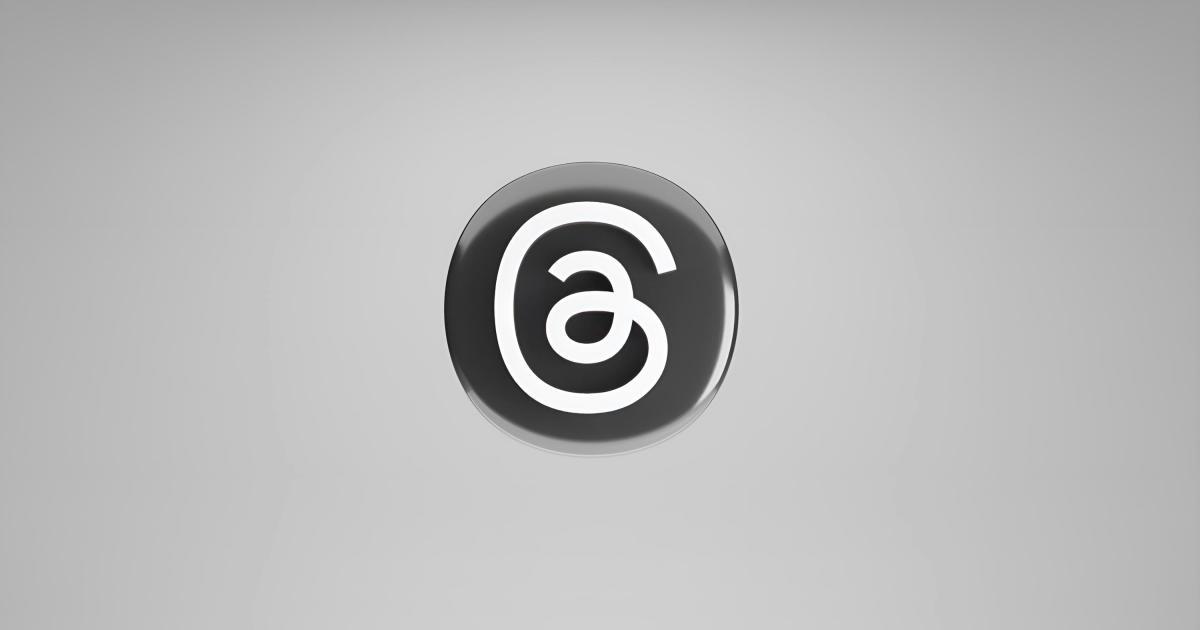How to Recover from Google Penalties Using Backlink Audit Tools


Introduction: Understanding Google Penalties and the Importance of Backlink Audits
In the ever-evolving world of digital marketing, maintaining a strong online presence is crucial for businesses of all sizes. One of the most critical factors in achieving this is a website's search engine optimization (SEO) strategy, which includes the management and analysis of backlinks. However, when a website falls victim to a Google penalty, the consequences can be severe, leading to a significant drop in search engine rankings and, ultimately, a decline in website traffic and revenue.

Google penalties can occur for a variety of reasons, ranging from unnatural link building practices to content duplication or other technical issues. Regardless of the cause, recovering from a Google penalty requires a comprehensive understanding of the problem and a strategic approach to address it. At the heart of this recovery process lies the backlink audit, a critical tool that can help identify and address the underlying issues that led to the penalty.
In this article, we will explore the process of recovering from Google penalties using backlink audit tools. We will delve into the importance of backlink analysis, the steps involved in conducting a thorough audit, and the strategies for addressing and removing problematic backlinks. By the end of this comprehensive guide, you will have the knowledge and the tools to navigate the complexities of Google penalties and successfully restore your website's online presence.
Understanding Google Penalties and Their Impact
Google penalties are the consequences imposed by the search engine giant on websites that violate its webmaster guidelines or engage in practices that are deemed unethical or manipulative. These penalties can range in severity, from minor ranking drops to complete de-indexing of the website, effectively removing it from search engine results.

The most common types of Google penalties include:
Manual Actions: These penalties are manually applied by the Google webspam team in response to specific violations, such as unnatural link building, cloaking, or content duplications.
Algorithmic Penalties: These penalties are automatically applied by Google's search algorithms, which are designed to detect and penalize websites that engage in practices like keyword stuffing, thin content, or other technical issues.
The impact of a Google penalty can be devastating, leading to a significant drop in search engine rankings, decreased website traffic, and a subsequent decline in revenue. In some cases, the penalty can even result in the complete removal of the website from Google's search results, effectively cutting off the primary source of organic traffic for many businesses.
To recover from a Google penalty, website owners must take a proactive and comprehensive approach, which often begins with a thorough backlink audit.
The Role of Backlink Audit Tools in Recovering from Google Penalties
Backlink audit tools play a crucial role in the process of recovering from Google penalties. These tools provide website owners with the ability to analyze their backlink profile, identify potentially problematic links, and develop a strategy to address and remove them.

Understanding the Importance of Backlink Analysis
Backlinks, which are links from other websites pointing to your own, are a critical factor in Google's ranking algorithm. While high-quality, relevant backlinks can significantly boost a website's search engine rankings, low-quality or spammy backlinks can have the opposite effect, leading to Google penalties.
By conducting a comprehensive backlink audit, website owners can:
Identify Problematic Backlinks: Backlink audit tools can help identify backlinks that may be harming a website's SEO, such as those from low-quality, irrelevant, or potentially spammy websites.
Analyze Backlink Profile: These tools provide detailed insights into the overall health and quality of a website's backlink profile, highlighting areas of concern and opportunities for improvement.
Develop a Disavow Strategy: Based on the findings of the backlink audit, website owners can create a disavow file, which is a list of backlinks that they request Google to ignore when assessing their website's ranking.
Monitor Backlink Growth: Ongoing backlink monitoring is essential to ensure that a website's backlink profile remains healthy and that any new problematic links are quickly identified and addressed.
Key Features of Effective Backlink Audit Tools
To effectively recover from a Google penalty, website owners should utilize backlink audit tools that offer the following features:
Comprehensive Backlink Profiling: The tool should provide a complete overview of a website's backlink profile, including the source, anchor text, and quality of each link.
Automated Backlink Categorization: The tool should be able to automatically categorize backlinks based on various factors, such as domain authority, spam score, and relevance.
Disavow File Generation: The tool should simplify the process of creating a disavow file by providing recommendations and the ability to easily export the list of problematic backlinks.
Ongoing Backlink Monitoring: The tool should offer continuous monitoring of a website's backlink profile, alerting the user to any new potentially harmful links that may require attention.
Competitor Backlink Analysis: The tool should allow website owners to analyze the backlink profiles of their competitors, providing insights into industry-specific best practices and benchmark their own backlink profile against their peers.
By leveraging these features, website owners can develop a comprehensive understanding of their backlink profile, identify and address problematic links, and ultimately work towards the goal of recovering from a Google penalty.
Conducting a Thorough Backlink Audit
The process of conducting a backlink audit can be daunting, but it is a critical step in the recovery process from a Google penalty. By following a structured approach, website owners can effectively identify and address the underlying issues that led to the penalty.

Step 1: Gather and Analyze Backlink Data
The first step in the backlink audit process is to gather and analyze the website's backlink data. This can be done using various backlink audit tools, such as Ahrefs, Majestic, or SEMrush. These tools will provide a comprehensive overview of the website's backlink profile, including the number of backlinks, their sources, anchor text, and other relevant metrics.
Step 2: Categorize and Prioritize Backlinks
Once the backlink data has been gathered, the next step is to categorize and prioritize the backlinks based on their quality and potential impact on the website's SEO. Backlink audit tools can often automatically categorize backlinks based on factors such as domain authority, spam score, and relevance.
This step is crucial in identifying the problematic backlinks that need to be addressed. Typically, backlinks can be classified into the following categories:
High-Quality Backlinks: These are the links from reputable, relevant, and high-authority websites that are considered valuable for the website's SEO.
Neutral Backlinks: These are the links that are neither particularly harmful nor beneficial for the website's SEO.
Low-Quality Backlinks: These are the links from low-authority, irrelevant, or potentially spammy websites that can negatively impact the website's SEO.
Toxic Backlinks: These are the links that are considered extremely harmful, such as those from websites involved in illegal or unethical activities, or those that are likely to trigger a Google penalty.
By prioritizing the backlinks based on their potential impact, website owners can develop a targeted strategy to address the most problematic links first.
Step 3: Develop a Disavow Strategy
After categorizing the backlinks, the next step is to develop a disavow strategy. The disavow tool is a feature provided by Google that allows website owners to request that certain backlinks be ignored when assessing the website's ranking.
The process of creating a disavow file involves the following steps:
Identify Problematic Backlinks: Use the backlink audit tool to identify the low-quality and toxic backlinks that need to be disavowed.
Obtain Necessary Information: Gather the necessary information about each problematic backlink, including the URL, anchor text, and source.
Create the Disavow File: Using the information gathered in the previous step, create a text file containing the list of backlinks to be disavowed, formatted according to Google's guidelines.
Submit the Disavow File: Upload the disavow file to Google's Disavow Tool, which can be accessed through the Google Search Console.
It's important to note that the disavow process should be used judiciously, as disavowing too many backlinks can also have a negative impact on a website's SEO. Website owners should carefully review the backlink data and only disavow the links that are clearly problematic or detrimental to the website's ranking.
Step 4: Monitor and Maintain Backlink Profile
The final step in the backlink audit process is to establish a system for ongoing monitoring and maintenance of the website's backlink profile. This involves regularly checking for new backlinks, evaluating their quality, and taking appropriate action as needed.
Backlink audit tools can be particularly helpful in this step, as they often provide features for continuous backlink monitoring and alerting. By staying on top of the website's backlink profile, website owners can quickly identify and address any new problematic links, reducing the risk of future Google penalties.

Strategies for Addressing Problematic Backlinks
Once the backlink audit process is complete and the problematic backlinks have been identified, the next step is to develop and implement strategies to address them. This may involve a combination of the following approaches:
1. Disavow Problematic Backlinks
As discussed in the previous section, the disavow tool is a powerful feature provided by Google that allows website owners to request the search engine to ignore certain backlinks when assessing the website's ranking. By disavowing low-quality or toxic backlinks, website owners can effectively remove their negative impact on the website's SEO.
It's important to note that the disavow process should be used judiciously, as disavowing too many backlinks can also have a negative impact on a website's SEO. Website owners should carefully review the backlink data and only disavow the links that are clearly problematic or detrimental to the website's ranking.
2. Reach Out to Webmasters for Link Removal
In some cases, website owners may be able to directly contact the webmasters of the websites that are hosting the problematic backlinks and request that they remove the links. This approach can be effective, especially for backlinks from websites that the website owner has a direct relationship with or can influence.
When reaching out to webmasters, it's important to provide a clear and concise explanation of why the link is problematic and request its removal. Additionally, website owners should keep track of their outreach efforts and follow up with the webmasters if the links are not removed in a timely manner.
3. Improve Content and Website Quality
In some cases, the root cause of the Google penalty may be related to the website's content or overall quality. By improving the website's content, user experience, and technical implementation, website owners can address the underlying issues that led to the penalty and make their website more attractive to both users and search engines.
This may involve:
- Creating high-quality, engaging, and relevant content
- Improving website navigation and user experience
- Addressing technical SEO issues, such as site speed, mobile-friendliness, and schema markup
- Diversifying the website's backlink profile by earning high-quality, relevant backlinks
By taking a holistic approach to improving the website's overall quality and user experience, website owners can not only recover from the Google penalty but also lay the foundation for long-term sustainable growth.
4. Monitor and Maintain Backlink Profile
Ongoing monitoring and maintenance of the website's backlink profile is critical to ensure that the recovery efforts are successful and that the website remains in good standing with Google. Backlink audit tools can be particularly helpful in this process, as they can provide continuous monitoring and alerts for any new problematic backlinks.
By regularly reviewing the website's backlink profile, website owners can quickly identify and address any new issues, reducing the risk of future Google penalties and maintaining a healthy, high-quality backlink profile.

Case Studies and Examples
To illustrate the effectiveness of backlink audit tools in recovering from Google penalties, let's examine a few real-world case studies:
Case Study 1: Recovering from a Manual Action Penalty
A leading e-commerce website was hit with a manual action penalty from Google, resulting in a significant drop in organic traffic and revenue. The website owner conducted a thorough backlink audit using Ahrefs and identified a large number of low-quality, spammy backlinks pointing to the website.
After creating a disavow file and submitting it to Google, the website owner also reached out to the webmasters of the problematic backlinks and requested their removal. Over the course of several months, the website owner was able to address the majority of the problematic backlinks, and the manual action penalty was eventually lifted.
The website's organic traffic and revenue gradually recovered, and the website owner continued to monitor the backlink profile to ensure that no new issues arose.
Case Study 2: Recovering from an Algorithmic Penalty
A small business website was hit by an algorithmic penalty, which was likely caused by a combination of thin content and a high percentage of low-quality backlinks. The website owner used SEMrush to conduct a comprehensive backlink audit, identifying the problematic links and categorizing them based on their quality and potential impact.
The website owner then developed a multi-pronged strategy to address the issue. First, they improved the website's content by creating more in-depth, high-quality articles and resources. Secondly, they used the disavow tool to remove the most problematic backlinks from the website's profile.
Finally, the website owner focused on actively building new, high-quality backlinks through guest posting, industry-relevant directory listings, and social media engagement. Over the course of several months, the website's search engine rankings and organic traffic gradually improved, and the algorithmic penalty was eventually lifted.
These case studies demonstrate the critical role that backlink audit tools can play in the recovery process from Google penalties. By providing a comprehensive understanding of a website's backlink profile and the ability to identify and address problematic links, these tools can be instrumental in helping website owners regain their online visibility and traffic.
Conclusion: Unlocking the Power of Backlink Audit Tools for Penalty Recovery
In the ever-evolving world of digital marketing, maintaining a strong online presence is essential for businesses of all sizes. However, when a website falls victim to a Google penalty, the consequences can be devastating, leading to a significant drop in search engine rankings and a decline in website traffic and revenue.
Backlink audit tools play a crucial role in the process of recovering from Google penalties. By providing a comprehensive overview of a website's backlink profile, these tools enable website owners to identify and address the underlying issues that led to the penalty, ultimately restoring their online visibility and success.
Through a structured approach that includes data gathering, backlink categorization, disavow strategy development, and ongoing monitoring, website owners can effectively navigate the complexities of Google penalties and regain their footing in the competitive digital landscape.
By leveraging the power of backlink audit tools, website owners can not only recover from Google penalties but also lay the foundation for long-term sustainable growth and success. As the digital world continues to evolve, the ability to understand and manage a website's backlink profile will remain a critical component of any successful SEO strategy.
Are You Crushing It in Internet Marketing?
Struggling to boost your online visibility and traffic? Semrush is the ultimate platform for digital marketers like you. With powerful SEO tools and competitive data insights, you can optimize your website, content, and campaigns for maximum impact.
Join over 7 million marketers already using Semrush to outrank their competitors, drive more qualified leads, and grow their businesses online. Get started today with a 7-day free trial, and unlock the full potential of your internet marketing strategy.
Unlock the Power of SEO with Semrush
Are you struggling to boost your online visibility and drive more traffic to your website? Semrush has the solution.
Our comprehensive platform offers advanced keyword research, competitor analysis, and SEO audits, empowering you to optimize your content and outrank your competition.